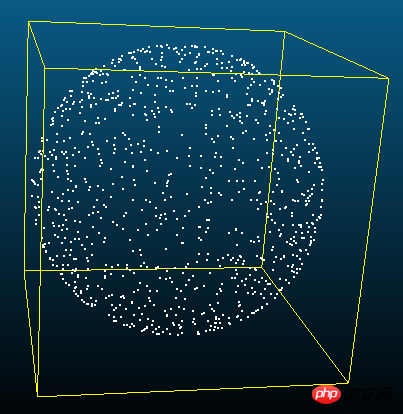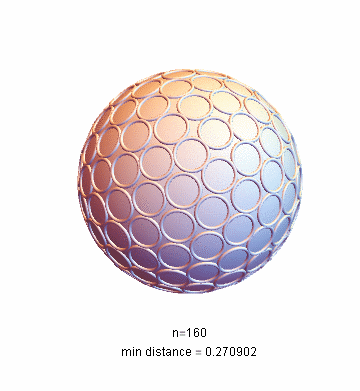希望能在球上获得均匀分布, 或者 每两个点之间的间距不小于某个值的N个点的坐标.
点的数量不需要太大, 在100到200之间就够用了.
球的中心点就是坐标系原点.
有看到另外一个大牛写的.
https://www.oschina.net/code/...
但是传入100个点的时候, 相邻很近的点出现几率非常大. 导致在球面上的点上放东西的时候, 就叠在一起了.
求教, 有没有什么其他算法能实现.
阿神2017-04-18 10:27:35
It is not difficult to achieve uniform sampling on a sphere. Just use a normally distributed random variable to generate a three-dimensional vector and then unitize it.

#include <iostream>
#include <fstream>
#include <random>
using namespace std;
int main()
{
std::default_random_engine gen;
std::normal_distribution<float> distrib(0.f, 1.f);
ofstream ofs("sphere.txt");
for (int i = 0; i < 1000; i++) {
float x = distrib(gen);
float y = distrib(gen);
float z = distrib(gen);
float r = sqrt(x*x + y*y + z*z);
ofs << x / r << ' ' << y / r << ' ' << z / r << endl;
}
return 0;
}But I don’t know if it meets the requirements between adjacent points. If you want to ensure that adjacent points are far away, you can learn from ideas such as jittering or stratified sampling.
import java.util.Random;
import java.io.*;
class SphericalSampling{
public static void main(String[] args){
Random rnd = new Random();
try{
PrintWriter writer = new PrintWriter("sphere.txt", "UTF-8");
for(int i = 0; i < 1000; i++){
double x = rnd.nextGaussian();
double y = rnd.nextGaussian();
double z = rnd.nextGaussian();
double r = Math.sqrt(x*x + y*y + z*z);
writer.println(x/r + " " + y/r + " " + z/r);
}
}catch (Exception e) {
e.printStackTrace(System.out);
}
}
}伊谢尔伦2017-04-18 10:27:35
The questioner means to make the distance between points on the sphere as large as possible, but uniform random distribution cannot guarantee that two points with an arbitrarily small distance will not appear, so this question has nothing to do with random distribution on the sphere (the title is too confusing).
It’s a long word when it comes to the uniform and random distribution of the sphere. I am puzzled by the magical algorithm given by @lianera earlier. Why use normal distribution? Later, I got a glimpse of the clues from the unitization: Unitization is actually the projection of the volume distribution onto the sphere. Because the normal distribution is spherically symmetric, it must be uniform when projected onto the sphere. In other words, what really matters is the spherical symmetry of the distribution, and the specific form does not matter. For example, if the area within a circle is uniformly distributed and projected, the uniform distribution on the circle can be obtained:

So the question holder can just find a good sub-optimal solution. The link given by the questioner is actually based on an average stacking strategy: divide the sphere into several circles evenly using lines of latitude, and then divide each circle into equal angles, but there will be fewer points above the circles at high latitudes, and at low latitudes. More.
The most valuable question
$$text{minimize:} quad sum_{ilt{}j}frac{1}{d^2(i,j)}$$
This not only highlights the distance between adjacent points but also keeps the function relatively smooth.
I use the
function provided byMathematica. When there are many points, it takes a long time to calculate. For example, it takes four hours to calculate 160 points on my machine. Result drawing:
NMinimize
